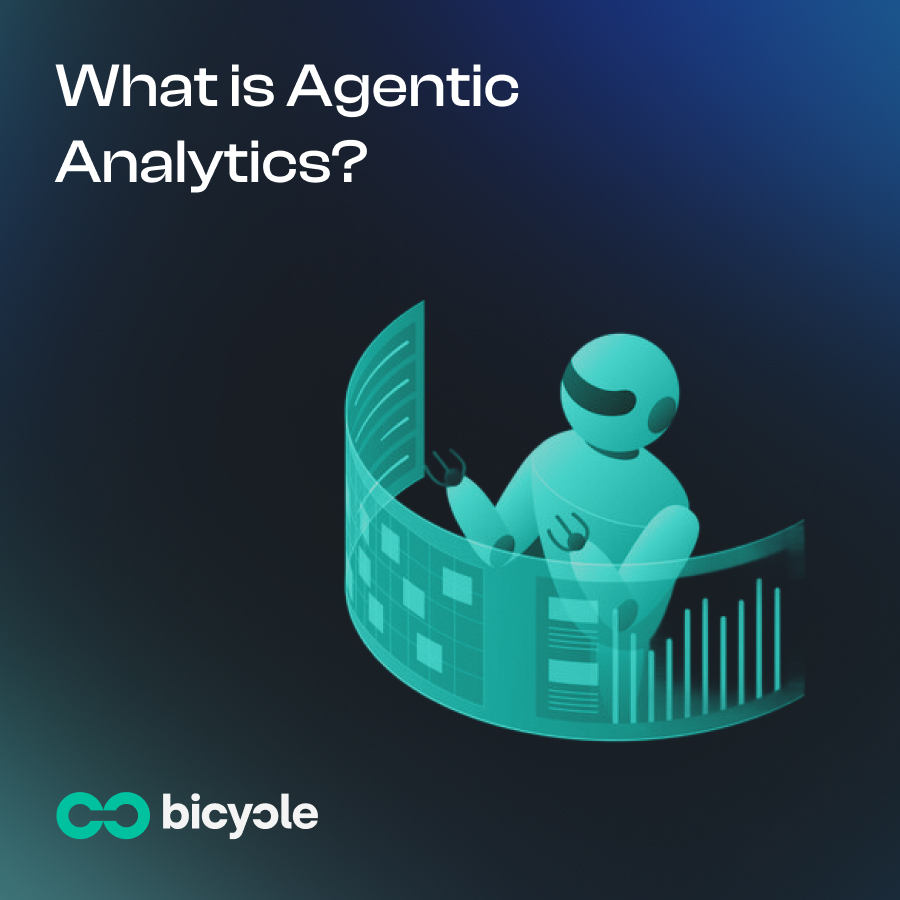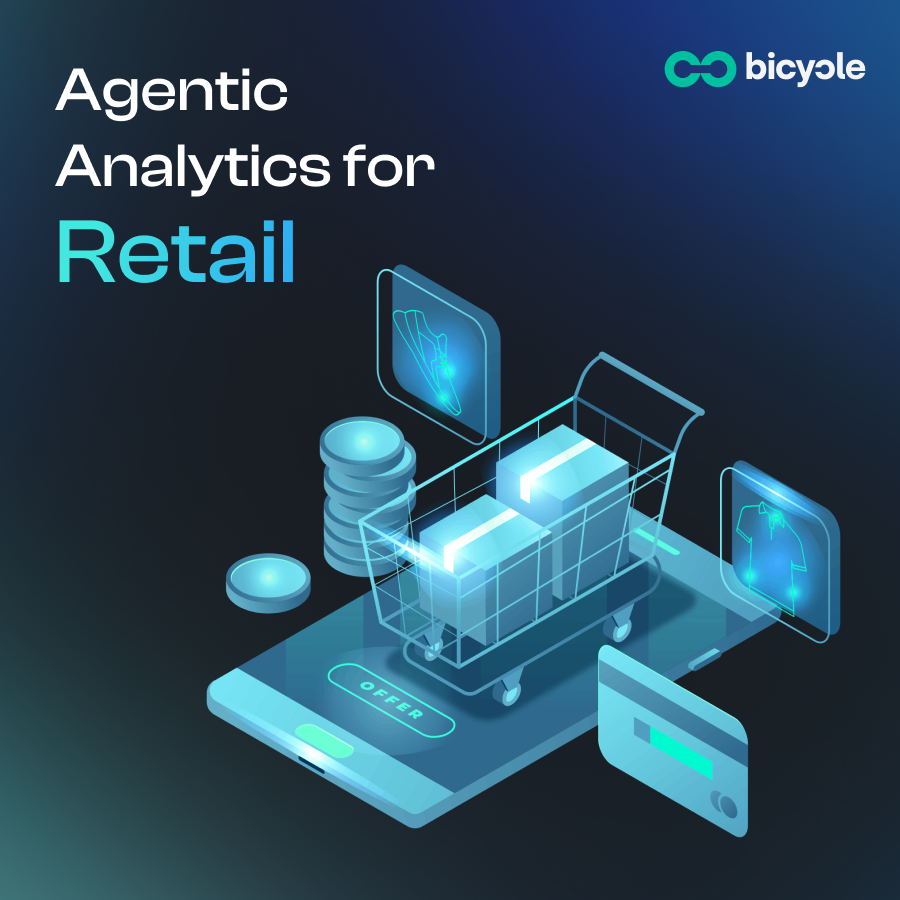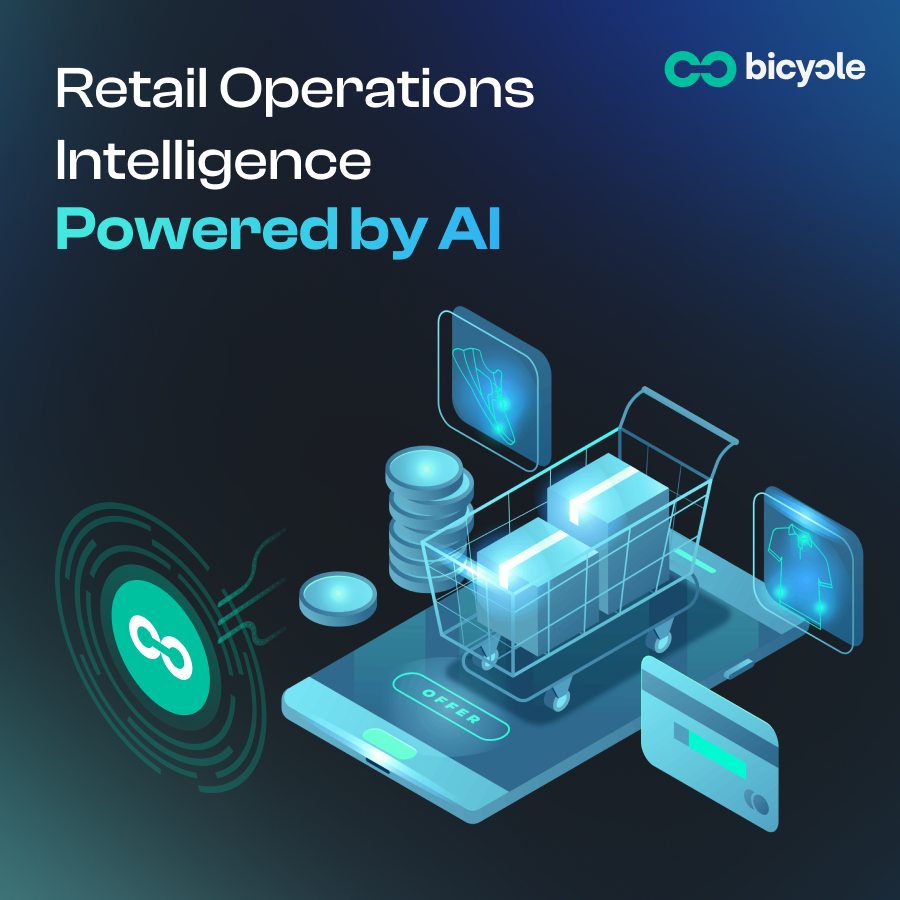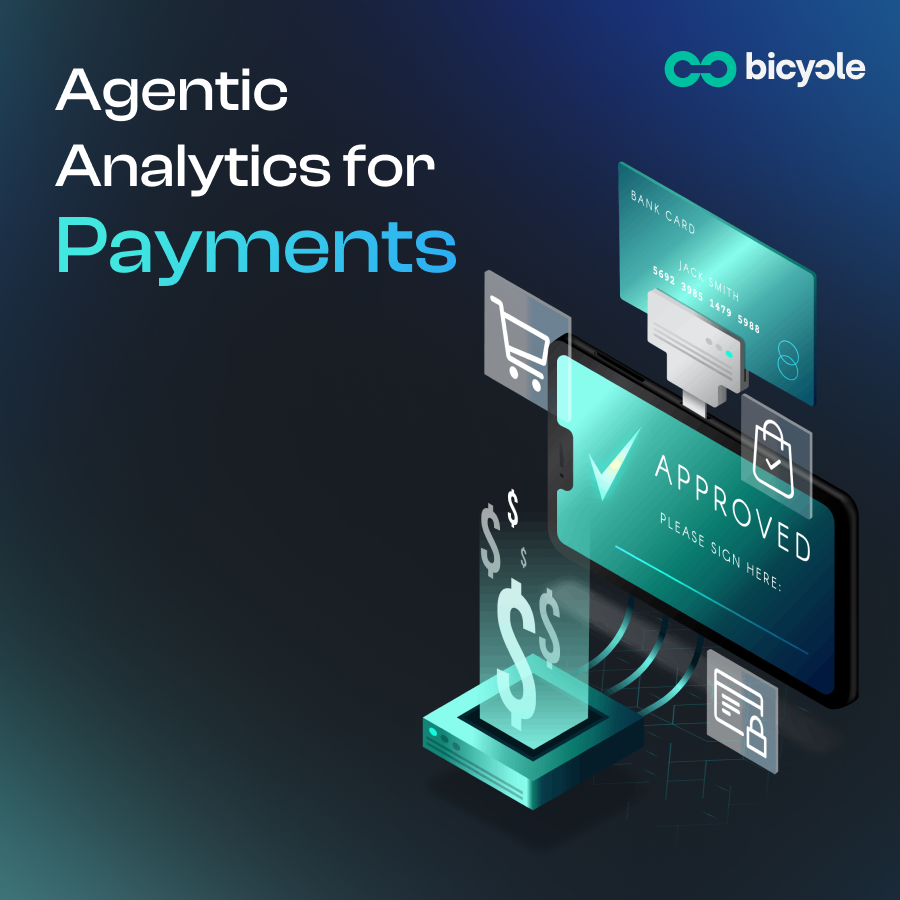Agentic Analytics Definition: Plain and Simple
Agentic analytics is analytics that acts.
It continuously monitors your live business, explains what is happening and why, and drives the right operational response automatically when safe, with humans in the loop when not.
For the purposes of this discussion, we focus on revenue-impacting use cases. While Agentic Analytics can support many other domains and use cases, here we illustrate how it prevents revenue leakage, protects bookings, and optimizes conversions.
It is not another dashboard. It is an AI-driven agent that thinks like an analyst, reasons like a business operator, and connects directly to your systems to safeguard revenue.
Many people hear “agentic” and assume it is just automation with an AI label. Think of a mid week 'fire drill. Something dips—bookings, approvals, or search conversions. Slack lights up. Screenshots fly. Ten people scramble across five tools to answer three questions: what changed, why, and what do we do now? By the time the dust settles, revenue has either leaked or opportunities have been missed.
Agentic analytics is the antidote.
It turns that messy, manual loop into software that learns your business, detects meaningful changes, finds root causes across systems, and acts. It is not magic; it is long-overdue intelligence built into the operational layer.
Why Traditional BI Breaks Under Pressure
Business Intelligence (BI) tools are great at telling you what happened and sometimes what might happen. But when it comes to understanding why it happened and what to do next, you are on your own, piecing together context from dashboards, wikis, vendor updates, and buried spreadsheets.
That is where the cracks show:
- Latency of understanding — Historical charts do not tell you why. They show a dip, not that “Android 14 + Chrome builds are failing 3DS on UPI.”
- Context fragmentation — Revenue signals come from hundreds of small systems. Dashboards cannot connect them, so humans improvise context, often inconsistently.
- Action gaps — Even when you know the cause, executing the fix (reroute, throttle, notify) is manual and slow.
Agentic analytics closes all three gaps. It compresses time from signal to explanation to action, unifies business and technical context, and executes intelligently.
What “Agentic” Really Means in Practice
Think roles, not buzzwords.
- AI as your data analyst — Answers natural language questions and surfaces meaningful anomalies.
- AI as your business analyst — Understands your domain: SKUs, suppliers, fares, BINs, PSPs, and more, and tests causes like a domain expert.
- AI as your operator — Executes validated actions with guardrails, such as flipping a feature flag, rerouting payments, or opening incidents automatically.
The difference is continuity. One agentic loop connects detection, explanation, and action in a seamless flow.
The Continuous Four-Step Loop
Most teams agree the path from insight to action runs through four steps:
- What happened?
- What is likely to happen?
- Why did it happen?
- What should we do?
Agentic analytics compresses this into a tight, always-on loop. Think of it as a living process:
- Detect: Spot meaningful KPI changes at the right granularity. For example: “search → add-to-basket for milk in Palo Alto dropped 12% between 8–10 a.m.”
- Explain: Evaluate business and technical hypotheses against your data. Example: “Out-of-stock sustained > 2 hours due to late PO arrivals; the products ranking criteria were updated in the latest deployment; competitor price moved 3%.”
- Decide: Determine the appropriate response based on policies. Example: For a sustained SKU drop, the system may route alerts to the category manager, schedule an automated feed refresh, or approve an immediate substitute promotion.
- Act: Execute the chosen response with full traceability. Example: The system automatically updates the digital shelf to hide unavailable SKUs, surfaces substitutes, logs the change, timestamps the action, and records expected recovery criteria for review.
The value is not in any single statistical trick. The magic lies in connecting detection, explanation, decision, and action into a repeatable, codified process tied to real operational levers.
Under the Hood: How Agentic Analytics Works
Agentic analytics runs on three foundations:
- Ontology (the business brain): Maps your business, its actors, actions, and relationships, enabling contextual reasoning.
- Signals (the live pulse): Combines transactional, internal, and external data to detect meaningful deviations at decision-level granularity.
- Pattern Engine (the sense-maker): Identifies anomalies, correlations, and event patterns, surfacing the top revenue-impacting insights.
These layers feed a root-cause analysis module that reasons like a seasoned operator, then hand off to an action interface that executes through your existing systems such as Slack, CRM, feature flags, or orchestration.
Top Agentic Analytics Use Cases Transforming Industry Verticals
Travel Example: Bookability and Supplier Circuit Breakers
When bookability dips, you do not need a chart. You need to know which carrier, which route, and what is failing.
The agent spots micro-drops, isolates the failing supplier, and automatically throttles or reroutes traffic, preventing revenue leaks before humans notice.
The same loop can also drive growth by surfacing price drops and triggering targeted campaigns within hours, not months.
Retail Example: Search Conversion at Granular Levels
An agent detects a drop in “search → add-to-cart → purchase” for milk in Palo Alto. It investigates stock, catalog, pricing, and local events, then adjusts search ranking or pricing policies in minutes.
Result: leaks fixed before they turn into trends.
Payments Example: Downgrades and Approvals
Approval blips or interchange downgrades are caught at the BIN × merchant × version level.
The agent correlates issues to deploys or gateway handoffs, enforces AVS (Address Verification System.), and routes traffic intelligently. Everything is logged for compliance and finance review.
How Agentic Analytics Changes Organizational Behavior
A subtle but powerful shift happens once you place a business-literate agent between data and action:
- Business users stop playing analyst. Bicycle AI works two ways: push and pull. Push: it routes plain-English data stories and alerts to the right owner (e.g., account-specific insights to the account manager) with suggested next steps and one-click actions. Pull: anyone can ask questions in natural language and get the explanation plus the recommended move. In both cases, the step is either executed automatically (with guardrails) or prepared for quick approval—so adoption rises because insights arrive in context and lead to action, not just charts.
- Data & Analytics teams become product owners of truth and action. They move from “report factory” to operational intelligence stewards:
- Define and govern the ontology (actors, actions, relationships) and source-of-truth metrics.
- Own data quality SLAs and anomaly policies the agent enforces.
- Curate reusable DataStories and RCA templates; promote them to push policies.
- Set guardrails for automations (eligibility, thresholds, rollbacks) and monitor impact.
- Focus on higher-order modeling and experiment design instead of ad-hoc pulls.
Net effect: fewer one-off requests, more durable, self-serve and pushable intelligence.
- Ops gains a second pair of hands. Ticket metadata is consistent, incidents include the right breadcrumbs, actions are reversible with clear policies, and everyone sees what changed, why, and what was done.
The impact is more than efficiency. It is cultural: teams shift from post-hoc reporting to live stewardship of revenue, with decisions and actions happening continuously rather than reactively.
Why Vertical Intelligence Matters
Real businesses do not operate in abstractions. Airlines track bookings and GDS quirks, not generic “events.” Retailers fight margin erosion on SKUs by store, not “entities.” Payments teams worry about AIDs, BINs, AVS, and MCCs, not “dimensions.”
Agentic analytics that is vertical-native comes ready with:
- Opinionated ontologies: PCCs and fare classes, SKUs, warehouses, fill rates, card types, gateways, downgrade categories.
- Cause libraries: The top five reasons your business breaks, built for your domain.
- Actionable levers: Direct interventions mapped to your systems: reroute a supplier, toggle store status, enforce address checks, promote routes, or adjust merchandising rules.
Generic tools can be taught this, but it costs time, creates errors, and increases team attrition. An agent that speaks your language on day one is already compounding value.
Where It Fits in Your Existing Data Stack
This isn’t a “throw out your stack” pitch. Agentic analytics slots in as the operating layer on top:
- BI & dashboards stay useful for exploration, governance, and stakeholder reporting. They just stop pretending to run your business in real time.
- Observability & logging continue to catch technical regressions; the agent connects those to revenue impact and prioritizes.
- Web & product analytics remain the source for user behavior; the agent pulls what it needs to explain and act.
- Orchestration, flags, ad platforms, CRM—these are the hands. The agent is the brain that moves them with context.
Agentic analytics connects them all and turns insights into impact.
Getting Started: What Success Looks Like in Your First 90 Days
- Weeks 1–2: You’ve picked two needles to move. Maybe bookability on top markets and search conversion on top SKUs. You connect the three data streams (transactions, internal, external). The ontology comes alive; you see actors × actions that match your vocabulary. The agent starts whispering: “this cut moved.”
- Weeks 3–6: You have your first closed loops—alerts that come with explanations and one-click actions. You keep humans in the loop for approval. It’s slightly messy. That’s fine. You’re building trust and tuning policies.
- Weeks 7–12: You green-light a small set of auto-actions with rollbacks (supplier circuit breakers, ad triggers on price drops, AVS enforcement). You measure the saves and wins, not just the alerts sent. The internal jokes about “ten people in a thread” start to fade.
It is not about boiling the ocean; it is about compounding closed loops.
Avoiding the Most Common Agentic Analytics Mistakes
- Agent sprawl. A separate bot for every micro-thing is cute until you need to govern it. Keep one brain that understands cross-domain causality.
- Black-box anxiety. Actions without explanations erode trust. Insist on “what changed, why this, what we did, how to roll back.”
- Trigger-happy automations. Not everything should be auto. Start with low-risk, high-frequency saves. Add guardrails: thresholds, timeboxes, multi-signal confirmation.
- Shallow context. If your agent doesn’t ingest internal and external context, it will overfit to dashboards and miss real causes.
- Over-indexing on chat. A great chat UI is a superpower. It’s not a substitute for opinionated, vertical logic and policy-driven actions.
Start small, stay explainable, and grow continuously.
Evaluating Agentic Analytics: What to Look For
When someone says “agentic,” I like to ask for three proofs:
- A live, revenue-adjacent loop. Show me something you catch and fix weekly that a dashboard never would. Not a demo toy—your top five issues or opportunities. Describe the action you took last week and its rollback criteria.
- Your business vocabulary on day one. If I say “PCC,” “fill rate,” or “AVS,” do you immediately show the relevant metric slice—correct dimensions, timeframe, and context—or do you ask me to define the term? The latter’s a red flag..
- Every action writes to an immutable log with who/when/why/what changed, the policy/approval, and a rollback reference—searchable and exportable for audits.
If those land, dig into data onboarding effort, latency, and the policy engine for actions. You’ll learn more in one real loop than in a month of procurement checklists.
Conclusion
Nobody wakes up wanting “agentic analytics.” You want fewer leaks, faster wins, and smarter operations.
Agentic analytics delivers that by making analytics live, contextual, and actionable. Once you see your system catch, explain, and fix an issue before lunch, it is hard to go back to static dashboards and Slack threads.
That is analytics worth building on.
Want to see what Bicycle AI can do for you? Book a demo today, and we’ll walk you through tailored insights for your business.

















